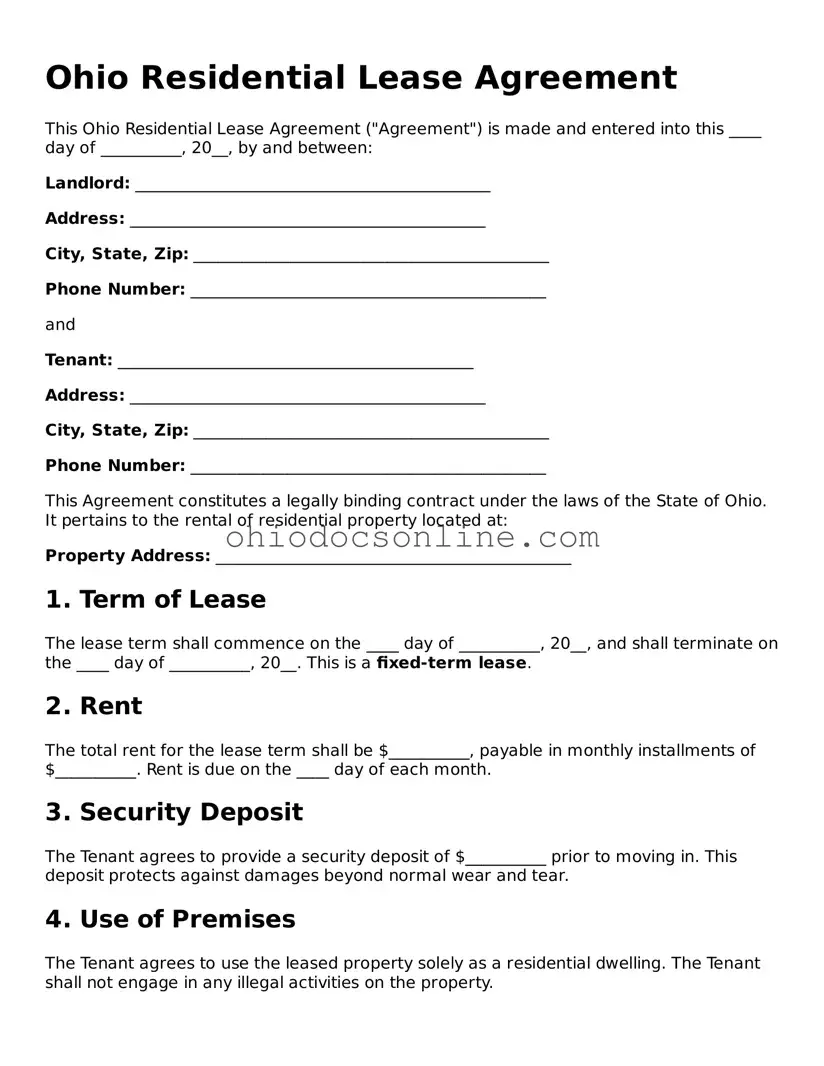Printable Residential Lease Agreement Template for Ohio
The Ohio Residential Lease Agreement is a legal document that outlines the terms and conditions under which a landlord rents property to a tenant. This form serves as a crucial tool for both parties, ensuring clarity and protection of their rights and responsibilities. Understanding its components can help tenants and landlords navigate their relationship more effectively.
Open Editor
